The Future Creative Center, Dentsu’s creative cross-disciplinary organization comprising more than 80 members, stimulates creativity in forward-looking projects that extend beyond advertising. For this series of articles, we plan to meet with members of the center to talk about projects they have completed, ones they plan to pursue, and how they combine creativity with a future outlook.
One of the projects is a website that provides original food recipes, along with tips on how to optimally cut vegetables so as to minimize waste. In Japanese called Yasashii Kirikata Jiten (literally, a dictionary of simple ways to cut), the website was launched by Japanese cutlery manufacturer Kai Corporation, in order to address the problem of food loss.
Although in recent years, awareness of food loss has been growing in Japan, cutting off and throwing out of excessive amounts of edible food parts during meal preparation is often overlooked. In fact, the amount of food lost by households nationwide as a result of this excessive disposal is estimated to be around 338 thousand tons every year.1
Compared with their awareness of the need to reduce food leftovers and waste, people seem not to recognize how cutting off and disposing of too much edible food is also an issue.
The website debuted on August 31, 2022, which date has been designated Vegetable Day in Japan. Since then, it has been praised as a unique initiative by a cutlery manufacturer, and has been selected by consumers to take part in advertising competitions. In addition to winning prizes, the website received a Bronze award in the Design category at the 2023 All Japan Confederation of Creativity (ACC) Tokyo Creativity Awards.
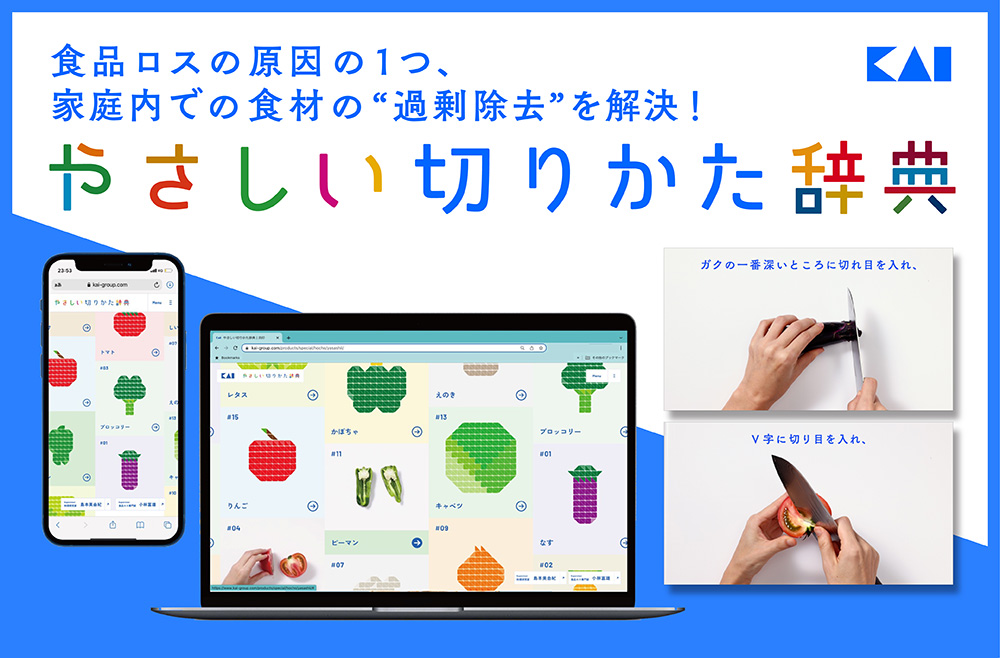
What makes the website so special is its user interface. Rather than focusing on the need to address food loss, the website attracts users because it is fun to use. Behind the approach were ideas provided by Kai Corporation and Dentsu’s production team.
For this installment, we spoke with three members of the production team:2 Yoshifumi Sato, a planner at Dentsu’s Future Creative Center; Sakura Yamaguchi, the project’s art director; and Sakurako Yasuda, who served as the business producer. They explained how the project unfolded during the following discussion.
Notes:
- According to a study published by Japan’s Ministry of the Environment in 2022 on initiatives for reducing and recycling food waste.
- The other members of the team were copywriter Hitomi Shimazaki and planner Shunji Morita.
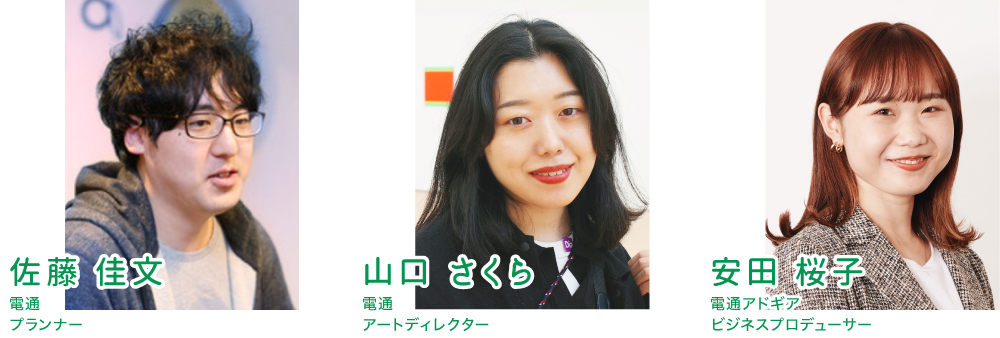
Initial idea: kitchen knife maker can address food waste
Yoshifumi Sato: The impetus of the project was the fact that a big proportion of food loss comes from what people may not realize, namely, removal and disposal of too much edible food during meal preparation.
One survey found that over 80% of respondents were aware of food loss, but only 18.3% saw excessive removal of edible food as a cause. Meanwhile, disposing of food was seen as a cause by 44.7% of respondents, and leftover food was recognized by 36.7%.
In response to this situation, the Yasashii Kirikata Jiten website was launched. It shows simple ways of cutting vegetables so as to leave no waste, and offers relevant food recipes. These basic cutting methods for veggies are even being promoted in school lessons and private–public initiatives.
Sakura’s initial proposal was what got the project started. She knew that Sakurako and I had previously worked on a Kai Corporation advertisement headed “Freedom to Shave,”* so she told us she planned to submit a proposal to the company.

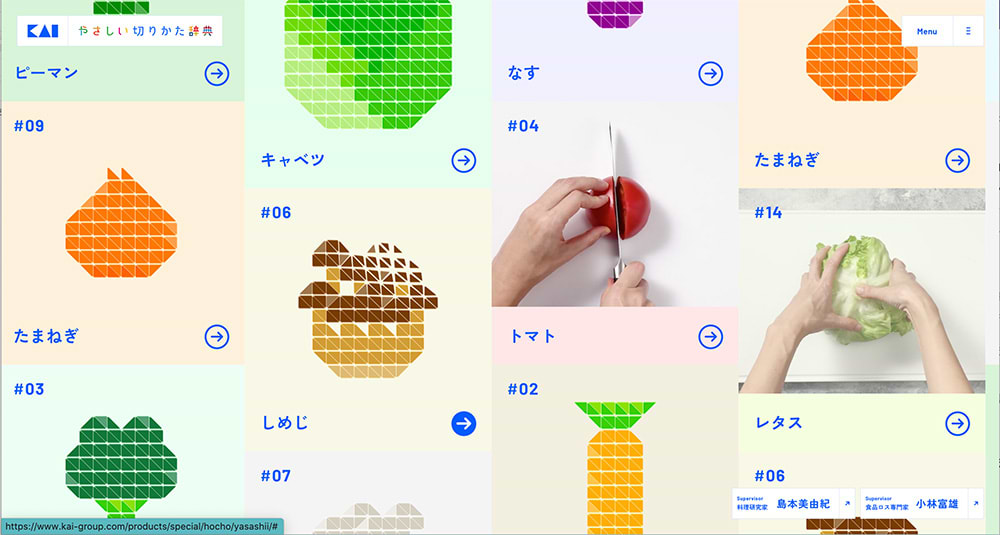
Sakura Yamaguchi: Through my involvement in food-related projects, I learned about the removal and disposal of too much edible food, as well as about how different techniques for cutting food and using kitchen knives can be more environmentally friendly.
When considering the best way to clearly convey the information, I thought that a maker of kitchen knives might be an excellent messenger. Kai Corporation has a solid reputation for promoting progressive messages to the public, such as its Freedom to Shave ad. With that in mind, I contacted Sato.
Sato: I thought it was a really great idea. Later on, one of the judges at the ACC Tokyo Creativity Awards commented on the fact that the long-established Kai Corporation addressed the problem of food loss by helping people eliminate waste when cutting up vegetables. I think this company-specific approach was very important.
Sakurako Yasuda: Actually, the idea was very well received by the representatives from Kai Corporation when we discussed it with them. The problem of cutting off too much of the edible parts of veggies can be solved today without any special utensils. For that reason, they said they wanted to help solve the problem ahead of the industry, and so decided to go ahead with the proposal.
Yamaguchi: Nevertheless, the representatives from Kai Corporation strongly requested that we avoid creating something that sounded preachy. For our initial proposal, I think our presentation materials came across as too high-minded, focusing on how kitchen knives could be good for the planet.
Although the Kai Corporation representatives certainly wanted their company to help the planet, they first wished to emphasize the benefits that would accrue for the individual. The message, thus, was that people can enjoy reducing food waste.
Yasuda: I think that follows from the company’s position of accepting everyone. The Freedom to Shave ad symbolically expressed that position. For this project, too, Kai Corporation didn’t want to confront anyone by telling them it isn’t good to cut away and dispose of too much food. Rather, they sought to promote the idea that everyone can enjoy food when they don’t waste it.
Sato: The number of initiatives related to the UN Sustainable Development Goals have been increasing recently, so people might be getting a bit tired of them. With that in mind, we wanted to produce a website that would be fun for users, without sounding preachy. That meant toning down the message.
There’s a tendency to make big statements when promoting solutions for societal issues, but we felt it was important to start with something to which people can relate. In addition, I think the determination and passion of the people at Kai Corporation really made this project happen, and was an underlying factor in its success.
Tile-pattern design developed for vegetable images; ideas of each production team member reflected
Sato: We mainly focused on the design of the website’s user interface, placing the emphasis on making it fun to use. In recent years, an increasing number of people have been playing video games, and consumers have become more familiar with user interfaces.
Consequently, if a website is not very interesting, or is perceived to be operating a little too slowly, people tend to stop using it immediately. This is also the case with websites that deal with societal issues. Thus, it would be a mistake to treat lightly the user interface design of a website focusing on such issues. The interface should be genuinely interactive and the website user friendly.
For example, when the user scrolls over an image of a veggie on the screen, its shape moves together with the cursor, swaying with a dancing motion. That makes it fun just to touch the images. Furthermore, the user can scroll through the website endlessly from the start. Usually websites open with a summary of their content, but this site allows the user to immediately experience it by scrolling through the content. We paid close attention to such details.

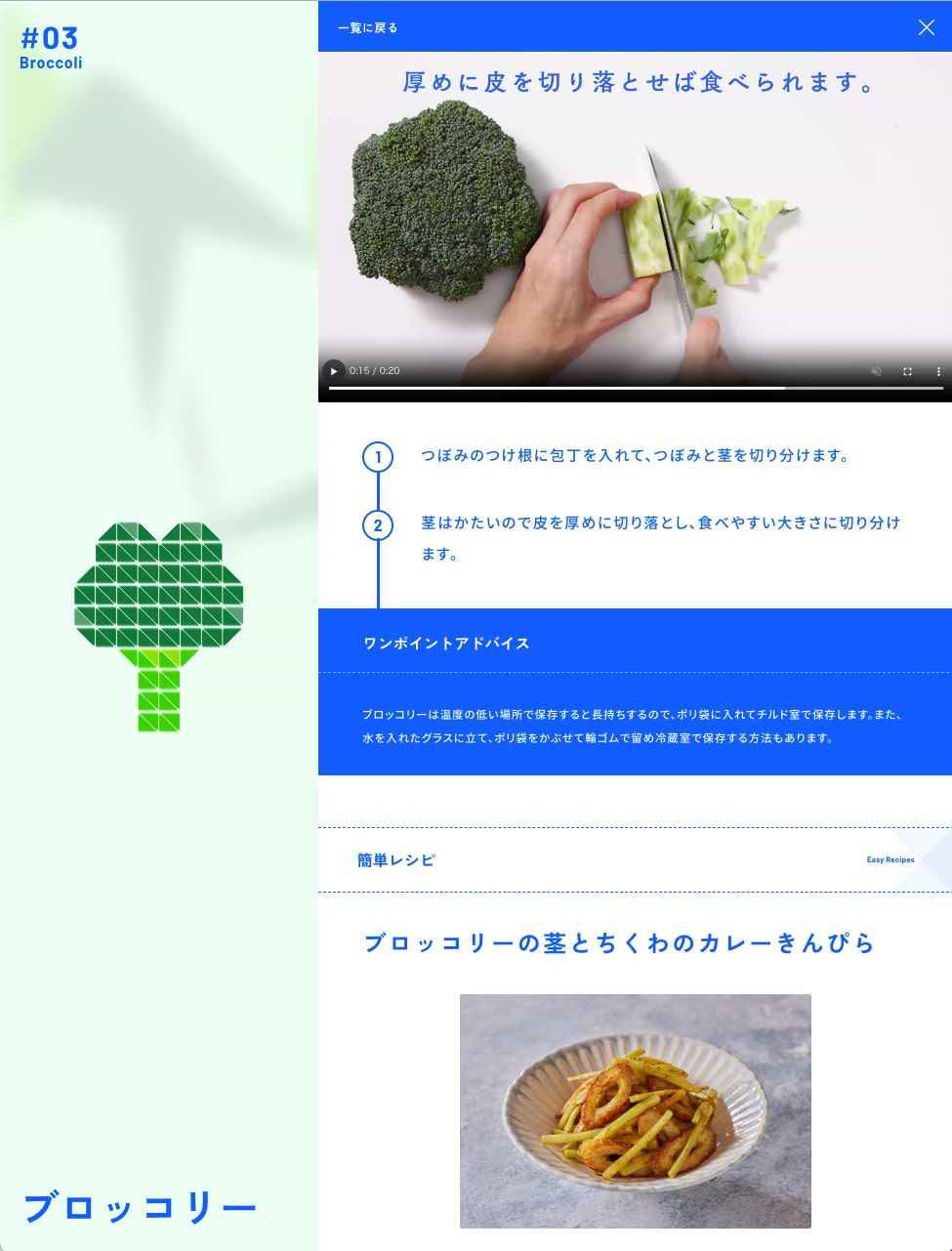
Yamaguchi: During the design process, the biggest challenge was deciding on the motifs and how to depict the vegetables. Depicting them in an overly homely way didn’t seem quite right to me, since Kai Corporation is a cutlery manufacturer rather than a food company. It has always branded its products in an organized and consistent way, with many ad campaigns incorporating sharp angles in the designs. While looking at these ads, I imagined how the company would present food items. Since the theme of this website was cutting methods, I got the idea of combining triangular shaped tiles shapes to create icons for the vegetables.
Sato: We had the highly skilled Hikaru Shiiki from Kome Inc. produce the website images. Under his direction and with his digital creativity, a top-notch team was formed and we were able to create high-quality images.
Yamaguchi: First of all, we asked Shiiki to make the tiles of the vegetable images seem to float up on the screen. Then we asked if he couldn’t make the way the tiles moved more interesting. I was really impressed by how he was coming up with ideas right up to the website’s launch.
Yasuda: We also tried to ensure that the website’s name and content would not sound patronizing or be thought objectionable by anyone, as I mentioned earlier.
We included the message that people can be happy about reducing the amount of discarded vegetables because that saves on household budgets in addition to being good for the planet. We hashed out ideas over and over with the team’s copywriter, Hitomi Shimazaki, right up to the project’s completion.
Continuing to raise awareness on how vegetables are cut can reduce waste
Yamaguchi: The project continued after the website went live in August 2022. So far, we have carried out activities together with high schools, universities, municipalities, and other organizations.
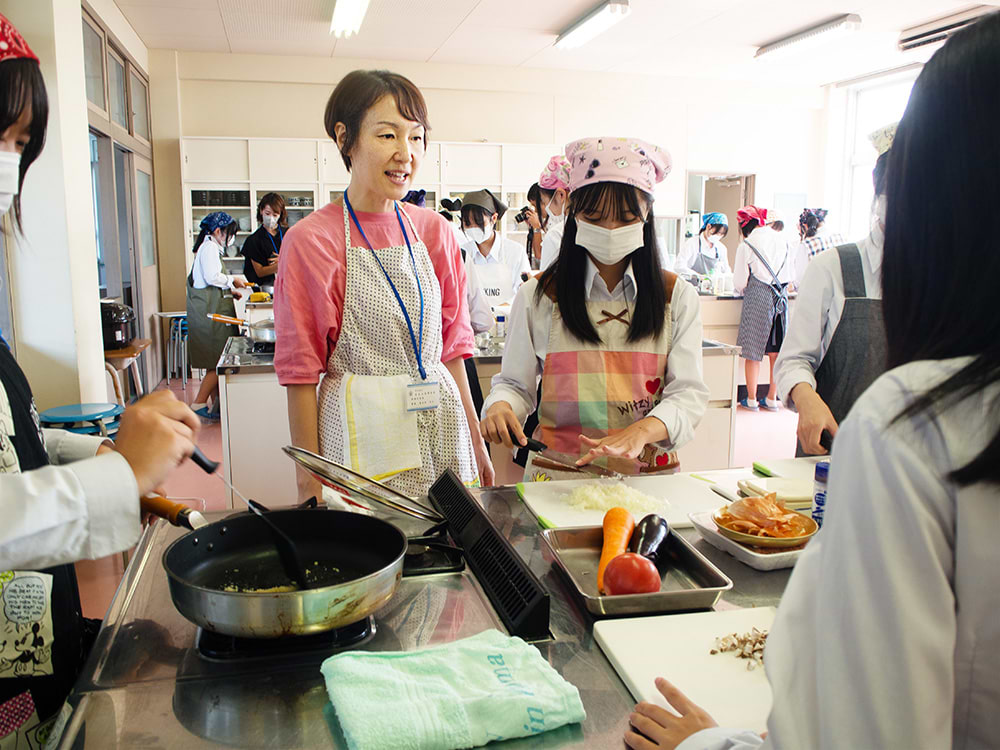
For example, after the website attracted interest from people in Ikoma City, Nara Prefecture, special classes on how cutting vegetables can reduce waste were held at a senior high school in that city. To spark more student interest in food loss and environmental issues, Miyuki Shimamoto, a well-known culinary expert who helps manage the website, was assigned to lead the classes. She prepared food during the classes while demonstrating how to cut vegetables without leaving any edible waste.
Sato: I hope these classes will be held at schools across the country in the future. It would be great if cutting methods that reduce food waste were included in home economics classes at some point. I would also like Dentsu to work with Kai Corporation on developing software that schools can use in their classes.
Yasuda: There are also other initiatives. At Japan Women’s University, student volunteers from a food sciences department used the simple cutting methods for reducing the amount of food discarded when demonstrating cooking methods at a campus festival.
During the summer vacation, Kai Corporation gives web-based lessons at farms. It teaches elementary school students basic vegetable cutting methods. Starting from how to reduce food waste, the children learn about harvesting vegetables and the UN’s Sustainable Development Goals.
Sato: These activities are ongoing, so we welcome anyone who would like to work with us. We look forward to hearing from all those who are interested, whether they are from schools, companies, or municipal governments.
Yamaguchi: A widespread misunderstanding of expiration dates—also known as “best before dates”—is another issue related to food loss. A product’s expiration date refers to the time until which the flavor is at its best; it does not mean the item cannot be eaten after that date.
The Japanese government has run an awareness campaign to help make this fact clear to the public. In the same way, we hope to spread the idea that changing how vegetables are cut using simple cutting methods is good for us and the planet.
Click here to visit the Yasashii Kirikata Jiten website (Japanese language only).
